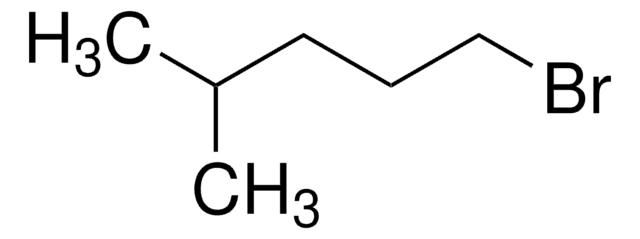Wichtige Dokumente
493953
5-Methyl-1-hexanol
97%
Synonym(e):
5-Methylhexanol
Größe auswählen
About This Item
Empfohlene Produkte
Qualitätsniveau
Assay
97%
Brechungsindex
n20/D 1.422 (lit.)
bp
167-168 °C (lit.)
Dichte
0.823 g/mL at 25 °C (lit.)
Funktionelle Gruppe
hydroxyl
SMILES String
CC(C)CCCCO
InChI
1S/C7H16O/c1-7(2)5-3-4-6-8/h7-8H,3-6H2,1-2H3
InChIKey
ZVHAANQOQZVVFD-UHFFFAOYSA-N
Verwandte Kategorien
Signalwort
Warning
H-Sätze
Gefahreneinstufungen
Acute Tox. 4 Oral - Flam. Liq. 3 - Skin Irrit. 2
Lagerklassenschlüssel
3 - Flammable liquids
WGK
WGK 3
Flammpunkt (°F)
86.0 °F
Flammpunkt (°C)
30 °C
Hier finden Sie alle aktuellen Versionen:
Besitzen Sie dieses Produkt bereits?
In der Dokumentenbibliothek finden Sie die Dokumentation zu den Produkten, die Sie kürzlich erworben haben.
Kunden haben sich ebenfalls angesehen
Active Filters
Unser Team von Wissenschaftlern verfügt über Erfahrung in allen Forschungsbereichen einschließlich Life Science, Materialwissenschaften, chemischer Synthese, Chromatographie, Analytik und vielen mehr..
Setzen Sie sich mit dem technischen Dienst in Verbindung.












